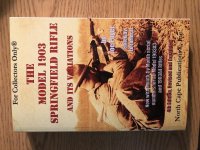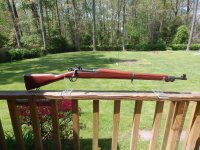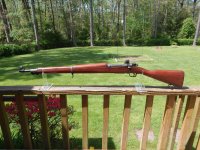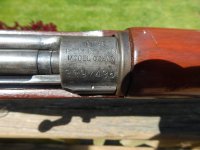sigp220.45
US Veteran
I did a little horse trading and now have this old soldier.



I could use a little help with the various markings.




The serial number tells me its from 1929, and the barrel marking must mean it got a new Springfield barrel in 11/44. I recognize the FJA as the mark of Frank J Atwood, who was a WWII Ordnance Officer.
Any help on the rest?
It seems to be in nice shape. The stock isn't sanded down at least. The bore is a little rough, but the rifling is strong.
The sling is unmarked except for a small anchor on the underside of the metal adjustment tab.
Also, if anyone has access to the Springfield Research Service and can take a look for this serial number I would appreciate it greatly.
Those are definitely sights for young eyes, though.



I could use a little help with the various markings.




The serial number tells me its from 1929, and the barrel marking must mean it got a new Springfield barrel in 11/44. I recognize the FJA as the mark of Frank J Atwood, who was a WWII Ordnance Officer.
Any help on the rest?
It seems to be in nice shape. The stock isn't sanded down at least. The bore is a little rough, but the rifling is strong.
The sling is unmarked except for a small anchor on the underside of the metal adjustment tab.
Also, if anyone has access to the Springfield Research Service and can take a look for this serial number I would appreciate it greatly.
Those are definitely sights for young eyes, though.
Last edited:





